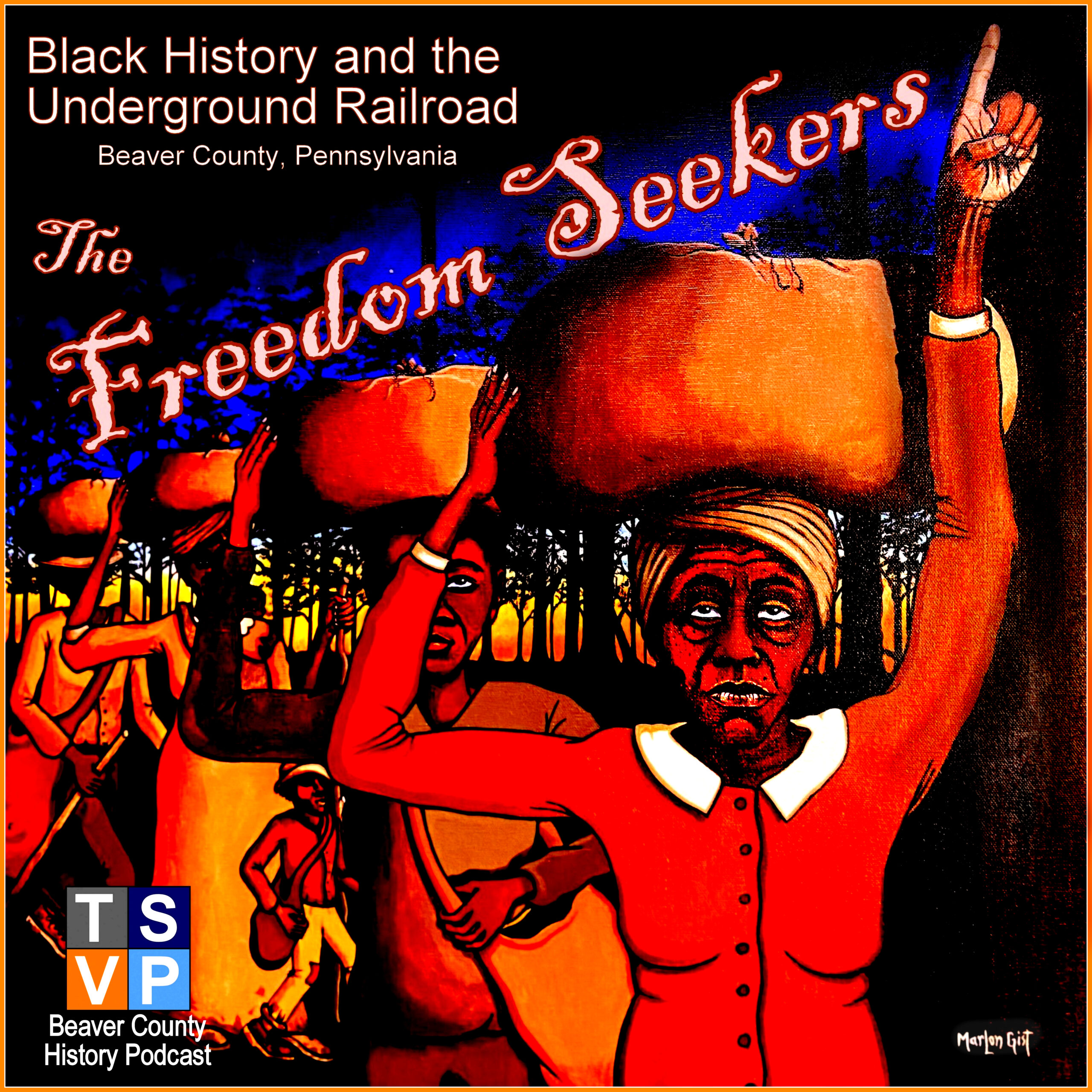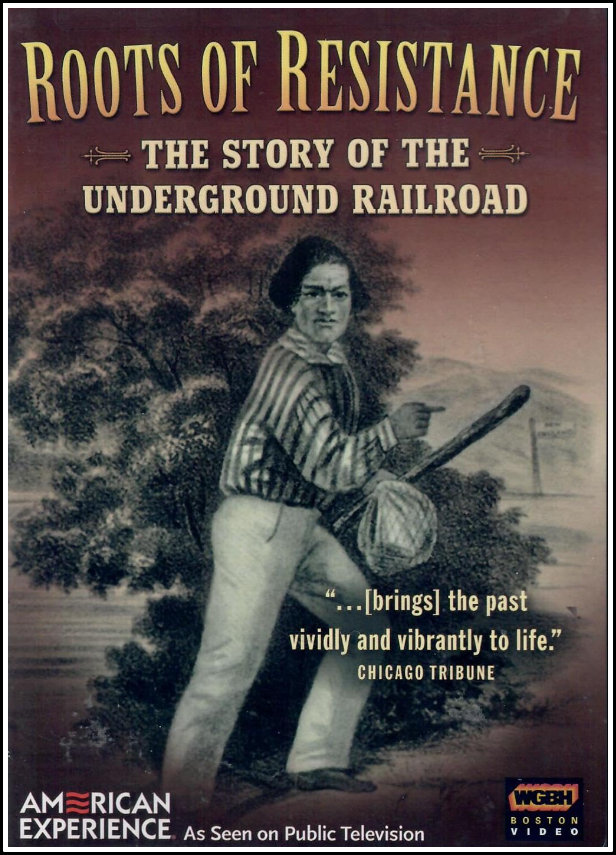
Black History and the Underground Railroad in Beaver County
Our Unknown History
About this Project
As much as the abolitionist movement and its Underground Railroad (UGRR) in Beaver County, Pennsylvania appear to be documented in some detail, we know very little about the actual experiences of Black Beaver Countian abolishionists or the “Freedom Seekers” themselves–those African Americans who risked their lives during the 19th century to end slavery or finding freedom by escaping oppression through a vast network of clandestine transportation routes through our area leading from the South toward Canada.
With few exceptions, their voices and stories are untold, perhaps lost to history.
Local historians have documented the abolitionist movement as early as 1828, as well as actual routes and stops along the UGRR used over several decades leading up to the Civil War. They have also identifed a pantheon of fiercely committed abolitionists serving as station masters, conductors, agents, and stockholders. The local historical record even describes detailed processes and methods by which Freedom Seekers found northward passage overland and by waterways, such as the Ohio and Beaver Rivers.
But who were these Black folk, often referred to as passengers, freight, or cargo (“hardware” for males or “drygoods” for females)? Each had a name, a family, a life story. Where did their journey begin? Where did it end? What was their experience like passing through Beaver County?
For good reason, contemporaneous written accounts and logistics of the UGRR are rare. Such records were incriminating. If caught, abolitionists could be jailed and fined. If Freedom Seekers were caught, they could be sent back to their owners–a fate which may lead to severe physical punishment or death.
Out of necessity, the UGRR operated by secretive social conventions, word of mouth instructions, and narrative codes: Follow the drinking gourd, The friend of a friend sent me, The wind blows from the South today, We’re expecting budles of wood, The dead will show you the way.
Beyond a small handful of identified abolitionists, known safe houses, and described escape routes, we know very little about the actual experience of freedom seekers following the UGRR in Beaver County, and we know less about the freedom seekers themselves. And if historians are correct that much of the UGRR was operated by African Americans themselves, was there a local Black network of station masters, conductors, agents, and stockholders?
We know very little about the Black experience on the UGRR in Beaver County.
This project ponders this incomplete history
This project seeks historical information about the black abolishionist movement, underground railroad, and the experiences of the Freedom Seekers in Beaver County and more broadly Western Pennsylvania.
Black Abolishionists
Hosted by noted American 19th century scholar David W. Blight, the Gilder Lehrman Center for the Study of Slavery, Resistance, and Abolition presents a conversation with Professor Richard Blackett disussing his book, The Captive’s Quest for Freedom: Fugitive Slaves, the 1850 Fugitive Slave Law.
The abolition of slavery was "the cause" of free African-Americans.
The online pubic history source, U.S. History, Pre-Columbian to the New Millenium, states, “Once the colonization effort was defeated, free African Americans in the North became more active in the fight against slavery. They worked with white abolitionists like William Lloyd Garrison and Wendell Phillips to spread the word. They developed publications and contributed money. Many, such as Robert Purvis dedicated their lives to freeing individual slaves from bondage. Although many pledged their lives to the cause, three African-American abolitionists surpassed others in impact. They were David Walker, Frederick Douglass, and Sojourner Truth.”
But this movement is far more complicated. Not only were black activists fighting to end slavery, but they also had to assert their basic human right of equality among their white allies. The PBS project, Africans in America puts it this way, “Although they often worked together, the relationship between black and white abolitionists was complex. Both groups hated slavery and fought for emancipation, but the struggle was much more personal for black abolitionists, who wanted not only their freedom but equal rights as well. Many white abolitionists, while decrying slavery, could not accept blacks as their equals.”
The Truths and Myths about The Underground Railroad
The abolition of slavery was "the cause" of free African-Americans.
In recent decades, noted historians such as Eric Foner, Larry Gara, Clarles, Blockerson, and David Blight have painstakingly researched the myths and realities surrounding the Underground Railroad (UGRR), the diverse abolishionist movement, and the complicated social, political, and economic dimensions of slavery in 19th century America.
Much of their work tends to unravel or tone down long held understandings of the UGRR–much of it inspired by Wilbur Siebert’s classic work, The Underground Railroad from Slavery to Freedom, a historical account with scholarly claims Foner characterizes in his own book about the UGRR, Gateway to Freedom, to be “largely a product of [Siebert’s] vivid imagination” (p. 12).
Siebert’s book was first published in 1898. “This comprehensive history,” states current publisher Dover, “was the first documented survey of a system that helped fugitive slaves escape from areas in the antebellum South to regions as far north as Canada. Comprising fifty years of research, the text includes interviews and excerpts from diaries, letters, biographies, memoirs, speeches, and a large number of other firsthand accounts. Together, they shed much light on the origins of a system that provided aid to runaway slaves, including the degree of formal organization within the movement, methods of procedure, geographical range, leadership roles, the effectiveness of Canadian settlements, and the attitudes of courts and communities toward former slaves.”
Caption: Gilder Lehrman Center Director David Blight sits down with Eric Foner to discuss his new book, Gateway to Freedom, about the Underground Railroad in New York.
Excerpts: The Underground Railroad from Slavery to Freedom (Wilbur Siebert, 1898)
Endnote #176: Conversation with George W. S. Lucas, Salem, Columbiana Co., Aug. 14, 1892, when he was fifty-nine years old. He was remarkably clear and convincing in his statements, many of which have since been corroborated. Citizens of Salem referred to him as a reliable source of information.

Endnote #699: Letter of John F. Hogue, Greenville, Pa., Nov. 25, 1895.

Endnote #727: Letter of John F. Hogue, Greenville, Pa., Nov. 25, 1895; letter of the Rev. James Lawson, Franklin, Pa., Nov. 25, 1895.

Endnote #377: Letter of John F. Hogue, Greenville, Pa., Nov. 25, 1895; letter of S. P. Stewart, Clark, Mercer Co., Pa., Dec. 26, 1895; letter of W. W. Walker, Makanda, Jackson Co., Ill., March 14, 1896; note-book of Joseph S. White, of New Castle, Pa., containing "Some Reminiscences of Slavery Times."

Endnote #287: Joseph S. White, Note-book containing "Some Reminiscences of Slavery Times," New Castle, Pa., March 23, 1891.

Endnote #274: S. B. Weeks, Southern Quakers and Slavery, p. 198.

The Story of Resistance

This 1990 PBS documentary provides a sweeping and dramatic narrative account of the actors and actions of the anti-slavery movement(s) in 17th and 18th century America.
You must be logged in to post a comment.